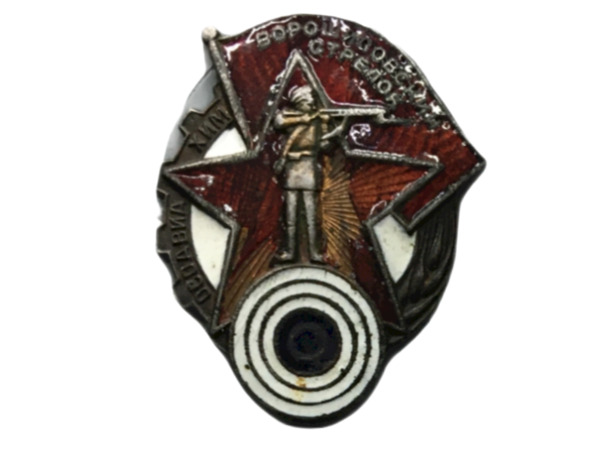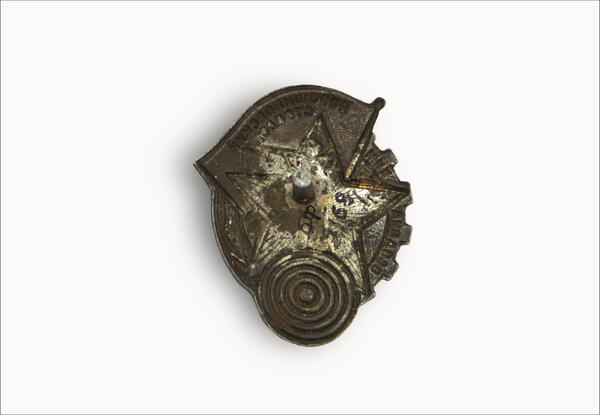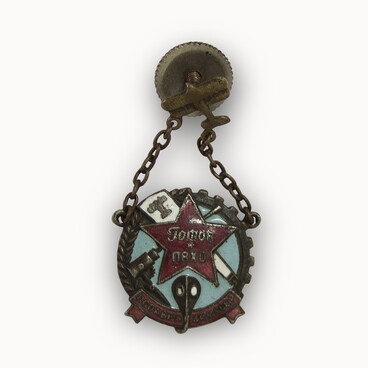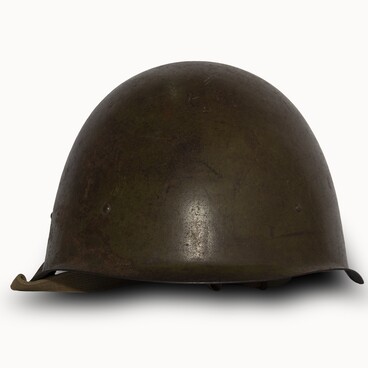In the early 1930s, the Soviet Union actively promoted the engagement and training of civilians in military affairs. For these purposes, the Society for the Assistance of Defense, Aircraft and Chemical Construction of the Soviet Union was formed in Moscow in 1927. It was also known as Osoaviakhim.
Its history can be traced back to the Military Scientific Society which was created during the Russian Civil War. Osoaviakhim existed until 1948 when it was reorganized into three separate voluntary societies. In 1951, they were once again combined into DOSAAF — the Volunteer Society for Cooperation with the Army, Aviation, and Navy.
Osoaviakhim contributed to the development of areas that were strategically important for the Soviet Union, including aviation, chemical defense, shooting skills, and sanitary defense. Its main goal was to involve the population in strengthening the nation’s defense capacities, as well as to organize supplementary reserves.
This was done mainly by establishing so-called grassroots units (clubs) at enterprises, where employees could complete training and pass a test to obtain distinguishing badges.
During its existence, Osoaviakhim established such badges as “Ready for Labor and Defense of the USSR”, “Ready for Air and Chemical Defense”, “For Sanitary Defense”, and “Voroshilov Rider”. To organize military training of the population, as well as to revive and develop shooting sports, in 1932, the Central Council of Osoaviakhim of the USSR also approved the title and badge “Voroshilov Sharpshooter”.
The badge consists of several parts. The main one is a round medallion painted with white enamel. Along the left edge, there is a part of a gear with the abbreviation “Osoaviakhim” inscribed on it. On the right, there is an ear of wheat. In the center, there is a five-pointed star painted with ruby enamel. It features the image of a shooter aiming a rifle. Above him, there is a scarlet banner with an inscription in gold letters that reads, “Voroshilov Sharpshooter”. Below, there is a white target with black circles.
The name of the badge is associated with an anecdote from the life of Kliment Yefremovich Voroshilov. It happened during qualification firing for commanders in the summer of 1932. The shooters went to their targets and reported their results to Voroshilov.
One target was completely untouched, and the shooter tried to justify his failure by the fact that the revolver was bad. Taking the revolver, Voroshilov shot at the target seven times, getting a high score of 59 points. Returning the weapon to the officer, Voroshilov said,
Its history can be traced back to the Military Scientific Society which was created during the Russian Civil War. Osoaviakhim existed until 1948 when it was reorganized into three separate voluntary societies. In 1951, they were once again combined into DOSAAF — the Volunteer Society for Cooperation with the Army, Aviation, and Navy.
Osoaviakhim contributed to the development of areas that were strategically important for the Soviet Union, including aviation, chemical defense, shooting skills, and sanitary defense. Its main goal was to involve the population in strengthening the nation’s defense capacities, as well as to organize supplementary reserves.
This was done mainly by establishing so-called grassroots units (clubs) at enterprises, where employees could complete training and pass a test to obtain distinguishing badges.
During its existence, Osoaviakhim established such badges as “Ready for Labor and Defense of the USSR”, “Ready for Air and Chemical Defense”, “For Sanitary Defense”, and “Voroshilov Rider”. To organize military training of the population, as well as to revive and develop shooting sports, in 1932, the Central Council of Osoaviakhim of the USSR also approved the title and badge “Voroshilov Sharpshooter”.
The badge consists of several parts. The main one is a round medallion painted with white enamel. Along the left edge, there is a part of a gear with the abbreviation “Osoaviakhim” inscribed on it. On the right, there is an ear of wheat. In the center, there is a five-pointed star painted with ruby enamel. It features the image of a shooter aiming a rifle. Above him, there is a scarlet banner with an inscription in gold letters that reads, “Voroshilov Sharpshooter”. Below, there is a white target with black circles.
The name of the badge is associated with an anecdote from the life of Kliment Yefremovich Voroshilov. It happened during qualification firing for commanders in the summer of 1932. The shooters went to their targets and reported their results to Voroshilov.
One target was completely untouched, and the shooter tried to justify his failure by the fact that the revolver was bad. Taking the revolver, Voroshilov shot at the target seven times, getting a high score of 59 points. Returning the weapon to the officer, Voroshilov said,




